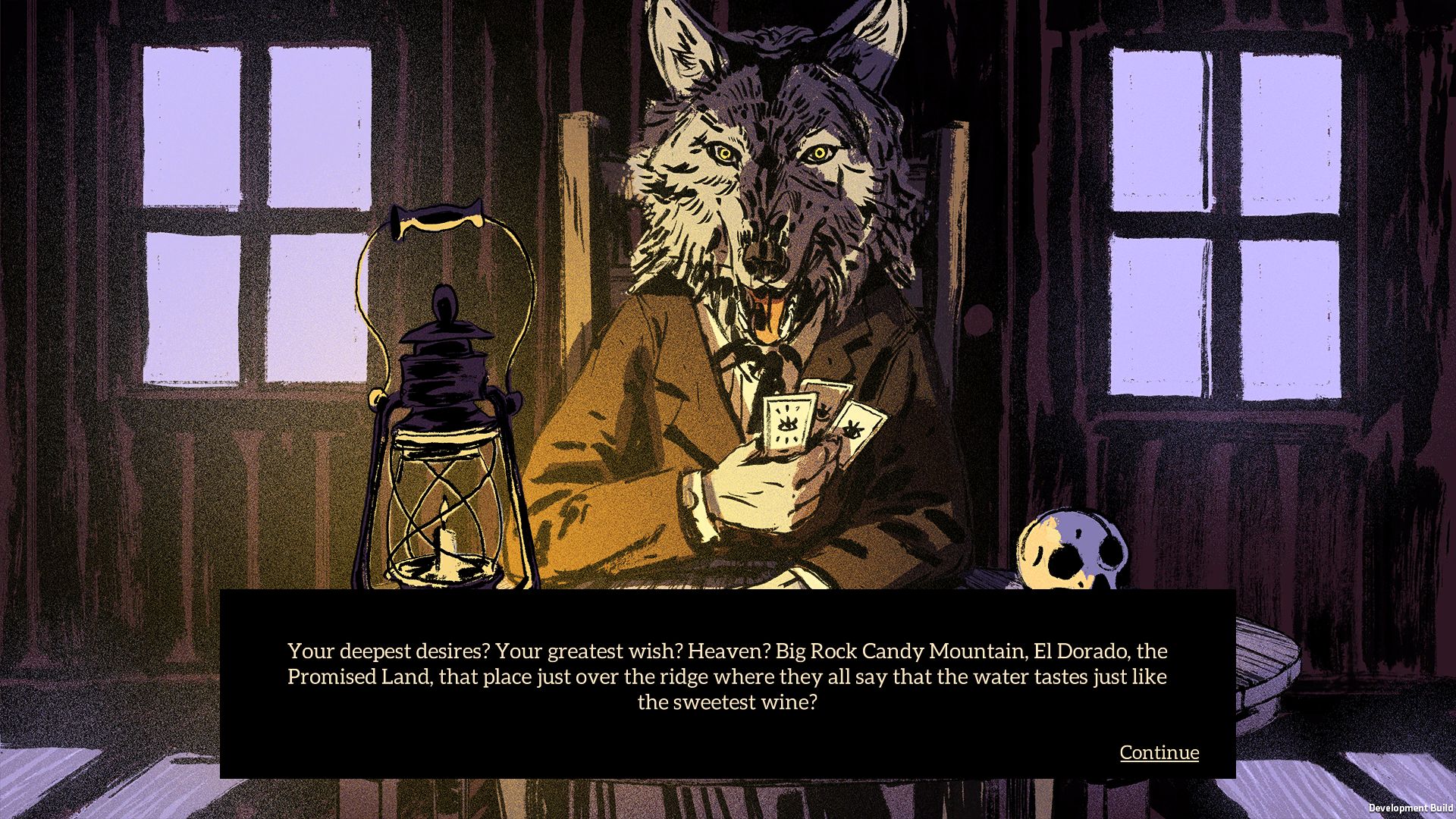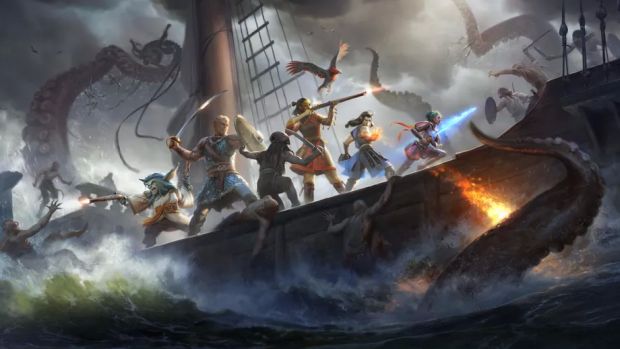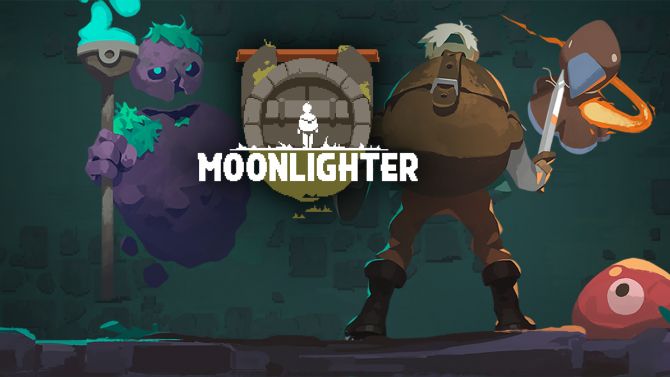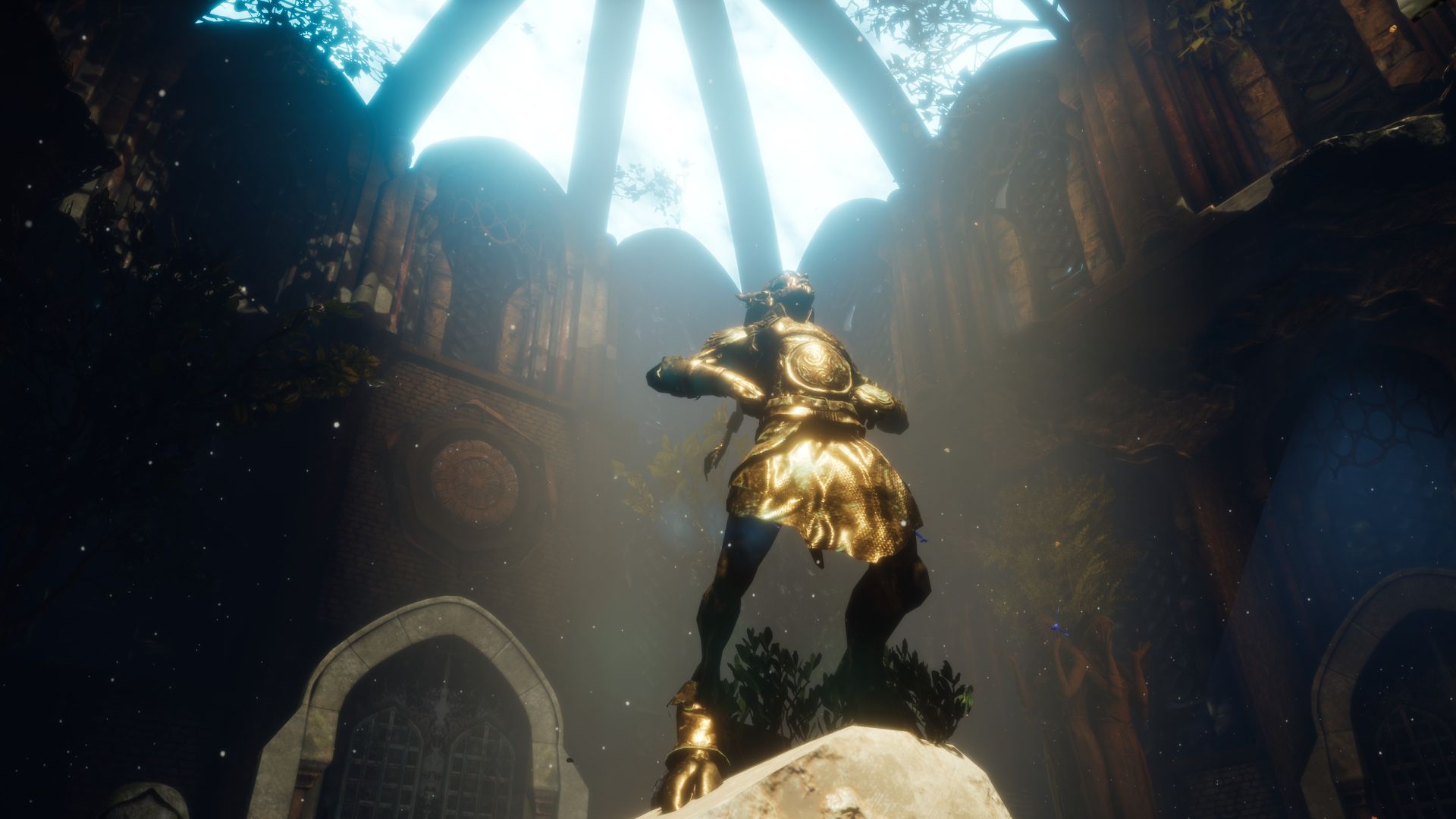Through the years and the various market swings and trends, indie games have managed to hold some sway over audiences. It’s interesting how many eras that could be pointed to as a significant uptick for this segment of the industry. Kickstarter projects receive millions in dollars for funding, big publishers like Sony and Microsoft provide absurd amounts of stage time at E3 and a relatively good publisher like Paradox Interactive, Devolver Digital or Focus Home Interactive reports good sales numbers. Needless to say, indie gaming is long past the date of “here to stay”. Amidst the many years of exceptional indie development efforts, though, of upticks like the original big three of Fez, Super Meat Boy and Braid, or the explosion of properties like Minecraft, 2018 has certainly become one of the best years for indie games.
To me, the term “indie” developer is equal parts counter-culture and unfettered creative vision. However, they are not on a different level from triple-A studios – really, the only things that separate them are bigger budgets and more marketing. Just like indie games are not by virtue worse than triple-A titles because of the lack of money, so too are they not superior because of their unique ideas (which come down to proper execution at the end of the day). I’m not a fan of the “triple-A” or “indie” moniker when it comes down to great games. Because great games, at the end of the day, are great games. And 2018, for all its typical franchises, has seen a lot of great games.
"Developed by Matt Thorson and friends aka Matt Makes Games that brought us the wildly entertaining multiplayer-centric Towerfall: Ascension, Celeste turned out to be one of the biggest surprises of the year."
Let’s start with January. It was a cold, dark month, punctuated by the impending release of Monster Hunter World. For me, the month was important for two reasons – Cellar Door Games’ Full Metal Furies and Konjak’s Iconoclasts. The former, obviously, is due to the developer’s amazing Rogue Legacy. Full Metal Furies has been in development for a long time and while its beat ’em up mechanics were decent, the overall gameplay and structure felt a bit wanting. It came and went but thankfully, the same didn’t apply to Iconoclasts. This years-in-development action platformer from Joakim Sandberg culminated in a colourful adventure with a deep story, lovable characters and excellent boss fights. It’s coming to Nintendo Switch as well, making it the perfect title to have on the go.
However, between these titles and Unknown Worlds’ Subnautica finally leaving Steam Early Access amid much fanfare (rightly so given how excellently the development was handled), there was Celeste. Developed by Matt Thorson and friends aka Matt Makes Games that brought us the wildly entertaining multiplayer-centric Towerfall: Ascension, Celeste turned out to be one of the biggest surprises of the year. It overtook a number of other indie titles by coming to the Nintendo Switch at launch but otherwise, it was a great game in every aspect regardless of the platform.
Mechanically, the platforming and variety in level design was compelling, fresh and organically challenging at every turn. The music and visuals were suitably retro but embodied a surrealistic flavour that felt unmistakably contemporary. I would give the most credit to composer Lena Raine for the sheer perfection that her soundtrack serves in setting the mood but everyone who worked on the game, from the artists and programmers to Thorson as designer and director, deserves the highest praise.
Even as Monster Hunter World was setting records and stealing many players’ hearts, Celeste was already my personal Game of the Year.
"Even though there wasn’t a ton of competition, the best new indie game of February was undoubtedly Into The Breach."
Surprisingly, February felt uneventful in comparison. Aegis Defenders from GUTS Department had a certain appeal to its gameplay with the mix of tower defense and 2D platforming but ultimately remained a niche title. February was mostly the month that numerous titles like SteamWorld Dig, Owlboy, Night in the Woods, Layers of Fear: Legacy, Outlast and much more released on the Nintendo Switch. The Nindies program was starting to pick up momentum.
Meanwhile, EA’s Fe was probably the biggest new indie release of the month simply based on the EA Originals label. Was it really exceptional? Did it push any boundaries, especially after January’s cavalcade of great releases? Not really but it was a solid title from the studio behind Stick It To The Man and the upcoming Ghost Giant. Moss was the other big title, simply due to the pedigree of its developer Polyarc (whose team had worked on titles like Guild Wars 2, Halo: Reach, Red Dead Redemption and Dragon Age).
Whether it was the instantly recognizable protagonist Quill or simply being one of the best VR titles ever made, Moss ably established its presence. There was also Where The Water Tastes Like Wine that sadly was proclaimed as a commercial disaster by the developer. Nevertheless, its gorgeous art-direction and strong cast, intermixed with interactive stories, was a welcome offering. An offering that will hopefully receive more appreciation down the line.
Even though there wasn’t a ton of competition, the best new indie game of February was undoubtedly Into The Breach. FTL: Faster Than Light developer Subset Games took a semi-rogue-like approach into the turn-based strategy genre, evoking an aesthetic similar to Advance Wars with intriguing gameplay and squad possibilities. The procedurally generated nature of maps, scaling difficulty and challenge completion required for new units ensured multiple playthroughs. But it was the deceptively simple yet complex gameplay that cemented it as one of the year’s best. There was just something so sweet about knocking an enemy unit into another while their attack kills a third. The ripple effect that this would have on surrounding buildings and other enemies was also worth watching out for at all times.
"Though ultimately falling back on the “one big twist” style of story-telling and having no single-player option, A Way Out’s characterization and strong mechanics allowed it to sell exceptionally well."
The scene started picking up again with all kinds of releases in March. Evoland developer Shiro Games returned with a completely different offering in Northgard. The strategy title focused on settlement building and exploration, as players managed resources and set out to conquer the immense campaign. Despite the strong critical acclaim, Northgard didn’t get too much appreciation but saw a number of updates to extend its life.
Other standout releases that didn’t get too much attention include Ghost of A Tale, a stealth fantasy game focused on a mouse named Tilo as he explores the history of a strange, anthropomorphic inhabitated kingdom; Q.U.B.E. 2, a puzzler in first person that involves the manipulation of cubes while one navigates an immense maze to survive; and of course, Hazelight Games’ A Way Out. Published under the EA Originals label and hyped up thanks to the antics of creator Josef Fares, A Way Out imbibed the couch co-op experience with a compelling story and gameplay situations. Though ultimately falling back on the “one big twist” style of story-telling and having no single-player option, A Way Out’s characterization and strong mechanics allowed it to sell exceptionally well. It crossed 1 million units sold in just two weeks.
April started earnestly enough with Minit. The game focuses on a mystery but much like Half-Minute Hero, a limited time period is provided to accomplish solve it. In between these sixty-second lives, players gather items that are shared across different lifetimes and advance forward (ideally). Though Minit handled its concept well, it was ultimately overshadowed by Harebrained Schemes’ BattleTech and 11 bit Studios’ Frostpunk, not to mention Hellblade: Senua’s Sacrifice finally coming to Xbox One.
In terms of heavyweights, that’s a pretty solid list. BattleTech became quite successful and Harebrained was acquired by Paradox Interactive. The developer announced future updates and more content (the recently revealed Flashpoint is the first paid expansion). Frostpunk, meanwhile, has been releasing free updates and quality of life changes besides prepping a new scenario for release later this year. Whether it was a tactical turn-based strategy with mech-building and customization or city-management with survival elements and an aspect of humanity, PC players weren’t wanting for unique experiences in April.
"Pillars of Eternity 2: Deadfire, despite having a budget that could dwarf other indie titles, presented an old-school approach to computer role-playing games in the vein of Baldur’s Gate and Icewind Dale."
Of course, there was also Pizza Titan Ultra, an action platformer which featured giant mechs rampaging through cities to deliver pizzas. Why? Because of course, the mech owners ran a pizzeria! It’s crazy and bizarre but combines the over-top style of Crazy Taxi with the destructible landscape of Blast Corps. It’s nuts and yet extremely endearing.
In May, the flow of indies picked up. Pillars of Eternity 2: Deadfire, despite having a budget that could dwarf other indie titles, presented an old-school approach to computer role-playing games in the vein of Baldur’s Gate and Icewind Dale. The addition of piracy, ship combat and exploration made it a fun romp even if, like the first game, the writing could be less than quaint. Titles like Omensight and Wizard of Legend also rose to prominence. The former was developed by Spearhead Games of Stories: The Path of Destinies fame. It saw players reliving the same day in Urralia, attempting to solve a murder to reverse the land’s destruction. Time manipulation, hack and slash combat and the ability to influence key characters all created a unique experience (plus the art-style was pretty good looking).
Wizard of Legend took a more straightforward rogue-like approach. Players explored a fixed number of dungeons with procedurally generated elements but the real hook was developing and combining magical spells together. Combat was fast, and the number of spells and items helped provide enough variety for a few repeat playthroughs.
Then there was Moonlighter, a much-anticipated pixel-art dungeon crawler that combined the combat of Zelda with the item shop management of Recettear. While its shopkeeping elements didn’t feel as dynamic, Moonlighter still had an enjoyable loop of combat, upgrading, dungeon looting and selling that was insanely addictive. Did we also mention the art looks simply gorgeous? It’s since been updated with over a hundred new rooms, various quality of life improvements and more interesting twists to the item store.
"July belonged to two major releases – The Banner Saga 3, the climactic conclusion to Stoic’s excellent trilogy, and No Man’s Sky NEXT."
Other titles that stood out in May include City of Brass, a first person rogue-like themed on Arabian Nights where players must venture into a dangerous city for the promise of treasure; FAR: Lone Sails, a linear adventure game where players embark on a sea-faring adventure of mystery, braving hazards and attempting to keep their ship going; and Yoku’s Island Express, a charming side-scrolling platformer that incorporates pinball into its core gameplay. Seriously though, if nothing else, try out Yoku’s Island Express. It’s a ball (I know, I’m sorry).
June and July were relatively quiet, though E3 2018 saw a number of titles either announced or outright released. Unravel Two debuted at EA Play 2018 and while it wasn’t as intriguing as Sea of Solitude (which is out in 2019), the sheer charm of the first game was unique. Plus, there was co-op this time. EA further surprised us by releasing the game as soon as it was announced because…well, why not? Nintendo followed suit. It released the Switch port of Team Cherry’s acclaimed Hollow Knight during its Direct presentation. Hollow Knight has since gone on to fame and fortune, selling over 1 million copies since first launching for PC last year.
Dontnod’s Vampyr was the other big indie release for June. While it seemingly flew under the radar, only slightly buoyed by reviews that praised the story but criticized for its combat, it managed to sell 450,000 units in a manner of weeks. July’s releases were pretty straightforward – This is the Police 2 released and alienated a few fans, though its shift towards a more XCOM-style tactical game wasn’t terrible. Chasm finally released after years in development and while it wasn’t bad, it did average slightly higher than “okay”. At least its 2D art maintained its appeal after so many years.
Honestly, though, July belonged to two major releases – The Banner Saga 3, the climactic conclusion to Stoic’s excellent trilogy, and No Man’s Sky NEXT. The latter technically wasn’t a new game but a large update, overhauling a number of features, adding new ones like co-op multiplayer (and PvP for the more violent-minded folk), and significantly improving the visuals. It did mark the game’s debut for Xbox One but perhaps the most significant development was Hello Games co-founder Sean Murray finally speaking out and admitting to the numerous problems at launch. The commitment to keep improving the game, especially with weekly events, continues.
"Perhaps what impresses me most about this year thus far is how many indie titles seemingly came out of left field and proved to be compelling experiences."
We hence come to August which saw the incredible Dead Cells finally leave Steam Early Access and become a fairly big hit with critics. I’ve waxed eloquent about how brilliant the game is, nailing its core gameplay loop thanks to a striking yet organic aesthetic. And really, it’s tons of fun to kill stuff in that game. No joke.
Guacamelee! 2 wasn’t a revolutionary leap over the sequel but it’s still an excellent follow-up, celebrating Mexican culture and folklore while embodying the very best of Metroidvania gameplay. Death’s Gambit, a 2D Souls-like, also released after numerous years in development. While I personally had a few qualms with it, the combat is fun and challenging to engage with as are the boss battles. Overcooked! 2 brought a whole new meaning to hating your friends with its cooking-based missions (and that odd design choice of only the hosting player receiving progress should be fixed by now). Even Donut County, a game where you control a whole that’s swallowing things up and increasing in size, looks bizarrely fun.
Perhaps what impresses me most about this year thus far is how many indie titles seemingly came out of left field and proved to be compelling experiences. For as much hype as there was for Iconoclasts, Celeste simply came out of nowhere and became known as one of the very best games ever made. Likewise, with August coming to an end (as of this time of writing), Sabotage Studio’s The Messenger has released and proven itself to be an excellent homage to the old-school Ninja Gaiden.
Even without the direct comparison, it’s still proven to be a fantastic 2D action platformer. For The King, IronOak Games’ tabletop roguelike RPG, was also pretty good and despite leaving Early Access with very little fanfare, it’s been well-received by both critics and regular fans. The same goes for Event Horizon’s Tower of Time, a more story-centric RPG dungeon crawler with some compelling combat and decent story-telling.
"Not everyone may find success but each title has earned its place in the hearts and minds of its fans, no matter their number."
Though the Fall and Holiday seasons are known for their triple-A releases, there are a few awesome indie games to look forward to. InExile’s The Bard’s Tale 4: Barrows Deep will arrive on September 18th, introducing a new generation to the dungeon crawling, RPG excitement that permeated old-school titles. Secret of Mana-style action RPG CrossCode will also finally release, exiting Steam Early Access on September 20th, and I couldn’t be more excited about finally playing the game through from start to finish. A number of titles like This War of Mine, Hyper Light Drifter, Everspace, Beat Cop, Moonlighter and much more will also be making their way to the Nintendo Switch, which has proven to be a premier destination for indie titles. Just ask anyone still addicted to Dead Cells on the go.
Frozen Synapse 2 is also probably still coming this year. It’s really hard to say at this point.
The industry has seen its ups and downs throughout the years. Whether it’s last year’s hefty push for loot boxes and reinforcing essential gameplay elements with loot boxes, or the constant nagging about the Battle Royale genre this year, there will always be some kind of pervasive cynicism. That doesn’t mean that some great games – even those seemingly “ruined” by microtransactions – aren’t available to indulge in but that’s beside the point. Through all the twists we’ve seen the industry take, the indie development scene continues to push forward. It may not always be easy or lead to returns as exemplified by Zeboyd Games (Cosmic Star Heroine) or Infinite Fall (Night in the Woods). Some developers like Hello Games may be forever marred by their past failures. Others may be defined more by their explosive personalities than their actual work like Josef Fares.
At the end of the day, the market has proven receptive to indie games and fresh experiences in general. Not everyone may find success but each title has earned its place in the hearts and minds of its fans, no matter their number.
Note: The views expressed in this article are those of the author and do not necessarily represent the views of, and should not be attributed to, GamingBolt as an organization.




















